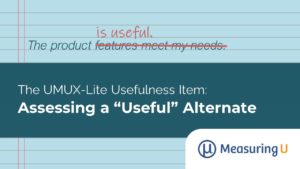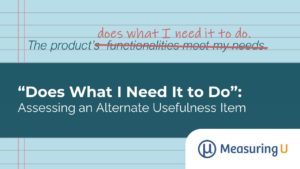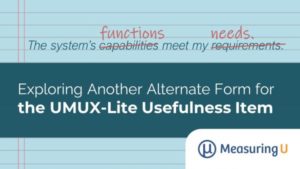
The UMUX-Lite Usefulness Item: Assessing a “Useful” Alternate
When Kraig Finstad (2010) developed the Usability Metric for User Experience (UMUX), his goal was to replace the ten-item System Usability Scale (SUS, a popular measure of perceived usability) with a shorter questionnaire that would (1) correlate highly with the SUS and (2) have item content related to the ISO 9241 Part 11 international standard,








